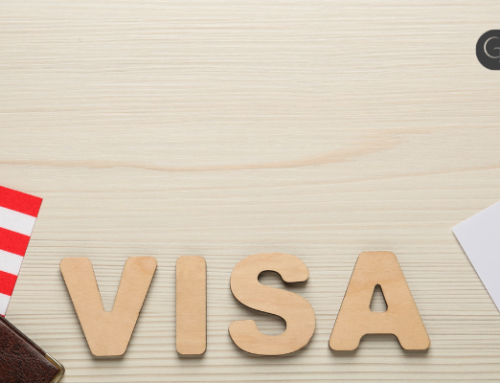Medical professionals from other countries desire to come to the United States for a variety of reasons. Cutting-edge training, the latest medical technology, higher quality standards and increased career opportunities all provide strong motivation in pursuing employment-based immigration.
Foreign doctor residency in the U.S. provides a path to citizenship. However, it can be a lengthy process, and there are complex requirements involved. At Garvish Immigration Law Group, LLC., our experienced employment-based immigration lawyers provide the trusted legal guidance you need throughout the process. Find out more about the requirements for international medical school graduates who wish to immigrate to the U.S. and your options in obtaining a foreign physician residency.
Employment-Based Immigration For International Medical School Graduates
According to data from the American Medical Association (AMA), an average of one out of every four practicing physicians in the United States obtained their undergraduate degrees from an international medical school. Roughly 12,000 International medical school graduates (IMGs) apply for U.S. residency positions each year. Amidst the ‘Great Resignation’ of U.S. workers, this number continues to climb as American healthcare providers face growing labor shortages.
In addition to the stiff competition applicants face in being accepted to a program, there are complex employment-based immigration procedures to follow as well. Foreign doctors admitted to a residency program have a couple of visa options available for them to be able to stay in the U.S. while they complete their residency; the J-1 and the H-1B visas.
Types of Visas
J-1 Visa
Qualifications For A J-1 Visa For International Medical Graduates
International medical graduates who want to perform a residency in the U.S. are required to obtain a visa allowing them to complete clinical training and perform medical services. Obtaining a J-1 visa is the most common option and enables you to participate in U.S. graduate medical education (GME) programs. Usually, once the international medical graduate has been accepted into a residency program, the hospital or institution will process the J-1 visa for him or her. Qualifications of a J-1 visa for a foreign doctor residency in the U.S. include:
- Certification from the Educational Commission for Foreign Medical Graduates (ECFMG), verifying the candidate’s education, skills, and proficiency in reading and writing English;
- Clearance for steps one and two of the United States Medical Licensing Examination (USLE);
- A statement of need from their home country that details the specialized skills the candidate will be seeking;
- A legitimate offer for residency or fellowship training.
ECFMG is designated by the U.S. Department of State as a BridgeUSA sponsor for J-1 exchange visitor physicians enrolled in accredited programs of graduate medical education or training, or advanced research programs (involving primarily observation, consultation, teaching, or research). Although many universities and research institutions in the United States are authorized to sponsor exchange visitors as research scholars, ECFMG is the sole sponsor of J-1 physicians in clinical training programs.
Medical residents holding J-1 visas are subject to the Foreign Residency Requirement; they have to return to their home country for two years when their J-1 visas expires. The Foreign Residency Requirement prevent them from getting H-1B non-immigrant employment or permanent residence status unless the 2 year requirement is either fulfilled or waived.
H-1B Visa
Obtaining An H-1B (Temporary Worker) Visa
International medical school graduates may also qualify for foreign doctor residency in the U.S. through an H1-B (Temporary Worker) nonimmigrant visa. An H1-B visa allows qualifying U.S. employers to hire international medical school graduates for residency programs. Requirements include:
- The person hired must work in a highly specialized field;
- The employer must file an immigration petition on their behalf;
- The position must pay the prevailing wage for the job;
- The employer must submit a certified Labor Condition Application to the Department of Labor.
Only a limited number of H1-B visas are available (the regular cap is 65,000 visas per year), and the program operates on a lottery system. This means you could wait a significant amount of time before your application is selected. Employers such as universities and related nonprofit entities, nonprofit research organizations and government research organizations are exempt from the H1-B visa cap. H1-B visas can be renewed for up to six years and require you to leave the country for a year before applying for another H1-B visa. Some residency programs take longer than six years, and that is another reason why this type of visa is not often used for international medical residents.
Completing A Foreign Doctor Residency In The U.S.
AMA requirements for international medical graduates state that you must complete a residency program regardless of any other training you may have received in your home country.
As part of the application process, you must register with the National Resident Matching Program (NRMP). As the name implies, the NRMP matches applicants with residency programs according to need, individual preferences, and the candidate’s qualifications. In submitting residency applications, the AMA generally encourages applying to a minimum of 25 different programs.
Choosing A Foreign Doctor Residency In The U.S. And Timelines For Employment-Based Immigration
Foreign doctor residency in the U.S. generally takes a minimum of three years. There are four different types of residency programs to choose from. Each will influence your timeline for employment-based immigration:
- Transitional programs:
First-year residents rotate through hospitals every two or three months in this program. While it counts as one year of training, it may not provide you with enough credits to move on to your second year.
- Preliminary programs:
This provides one year of training for doctors wishing to specialize in a specific field of medicine.
- Categorical programs:
This traditional three-year, hospital-based program allows you to train up to board eligibility.
- Primary care programs:
Geared towards generalists, these programs are increasingly popular and focus on providing ambulatory care in the community.
Submitting Your Foreign Doctor Residency Program Application
With over 10,000 candidates applying for foreign doctor residency in the U.S., competition among applicants is fierce. When it comes to submitting your foreign doctor residency program application, we recommend the following tips that can give you an advantage and help you stand out from the crowd:
- Avoid copying someone else’s work.
While using common keywords or phrases may be to your advantage, your application needs to be original. Copying someone else’s application reflects poorly on you and could result in disqualification.
- Highlight your talents and abilities.
You want your application to catch the reader’s attention. It should convey all the qualities that make you the perfect candidate for a foreign doctor residency program in the U.S. Include educational achievements, awards received, outstanding test scores, and any volunteer work you performed.
- Write a compelling personal statement.
Even if not required, a personal statement provides insight into your character, conveys your goals, and helps you stand out in the mind of the person reviewing your application.
Changing Your Immigration Status to Remain in the U.S.
Once you complete your residency program in the U.S., you may want to eventually change your immigration status so that you can remain in the country permanently. The following outlines some of your options:
- H1-B (Temporary Worker) Visa
An employer may apply for an H1-B for you, which will allow you to work in the U.S. Depending on the employer, the application may be exempt from the annual H1-B visa cap and the lottery explained above. This visa can generally be renewed for up to six years.
- O-1A Visa (for Extraordinary Ability)
As a medical doctor, you may apply for an O-1A visa for extraordinary ability in medical science. Extraordinary ability in this context means that you are part of a small group of professionals in your field that have achieved a position at the top of their careers. This can be demonstrated by documenting your past achievements and contributions to your field of study. In the case of physicians and clinicians, a fellow with several years of training and experience in your specialty may allow you to obtain the evidence you need to apply for this type of visa. This is an employment-based visa, and therefore, you require an employer to sponsor you. This visa is not subject to a cap and does offer a path to citizenship.
- Permanent Labor Certification (PERM):
If you have an employer sponsor, you may be eligible for PERM. Issued via the U.S. Department of Labor, PERM certifies there are not enough willing, able, and qualified people to perform in your area of employment and that your hiring will not affect U.S. workers. Once approved, you will still need to file an I-140 Immigrant Worker Petition through U.S. Customs and Immigration Services (USCIS).
- National Interest Waiver (NIW) For Physicians:
This does not require employer sponsorship and allows you to file your I-140 petition directly with USCIS. As the name implies, you may be eligible for a National Interest Waiver if your work is of high value and serves the national best interests rather than a specific geographical location.
- Employment-Based Immigration First Preference Petitions:
If you can be categorized as an Outstanding Researcher or have what USCIS classifies as ‘Extraordinary Abilities’ in the medical field, you may be eligible for an EB-1 First Preference visa.
Please note that you may require a J-1 visa waiver in order to apply to qualify for any of the options above . We will be expanding on the J-1 waiver issue in a future post.
About the Author
Natalia Muñoz
Natalia Muñoz is an Associate Attorney at Garvish Immigration Law Group. She was born and raised in Bogota, Colombia where she earned a law degree from Universidad de Los Andes followed by a specialization in Foreign Relations and Negotiation at the same University. She later moved to the U.S. to pursue her graduate studies in law in Boston University. After graduating she moved to Miami where she worked as an international tax and corporate attorney advising foreign investors for over 15 years.







